- Home
- Kathy Reichs
Bones to Ashes Page 3
Bones to Ashes Read online
Page 3
After collecting the upended pens and pencils, I dropped into my chair, cleared a small section of desktop, and scanned the first form asking for my expertise.
Pathologist: M. Morin. Investigating officer: H. Perron, Service de police de la Ville de Montréal. SPVM. Formerly known as the Service de police de la Communauté urbaine de Montréal, or SPCUM, the SPVM are the city boys. Same force, new spin. Nom: Inconnu. Name: Unknown. Skipping over the LSJML, morgue, and police incident numbers, I went straight to the summary of known facts.
Skeletal parts had been bulldozed up at a construction site west of centre-ville. Could I determine if the bones were human? If human, the number of persons? Time since death? If recent, could I ascertain age, sex, race, and height, and describe individuating characteristics for each set of bones? Could I establish cause of death?
Typical forensic anthropology stuff.
The second form was also SPVM, city police. Emily Santangelo was the pathologist, and therefore coordinating all expertise concerning the cadaver. This case involved a house fire, an incinerated corpse, and a denture melted beyond recognition. I was being asked to establish congruence between the charred remains and the ninety-three-year-old man reported living at the address.
Third form. A bloated and badly decomposed body had been dredged from Lac des Deux Montagnes, near L’Île-Bizard. Beyond the fact that the victim was female, the pathologist, LaManche, could determine little. Teeth were present, but there’d been no hit when dental information was entered into CPIC, the Canadian counterpart of the American NCIS. Could I ascertain age and racial background? Could I check the bones for signs of trauma?
Unlike the first two, LaManche’s case was SQ. The provincial cops.
One town, two police agencies? Sounds complicated. It’s not.
Montreal is an island, part of an archipelago trailing from the confluence of the Ottawa and St. Lawrence rivers. Its southern tip is wrapped by the fleuve Saint-Laurent, its northern by the Rivière des Prairies.
The small island is only fifty kilometers long, and varies from five to thirteen kilometers in width, narrowing at its ends and thickening at its center. Its dominant feature is Mont Royal, an igneous intrusion rising a proud 231 meters above sea level. Les Montréalais call this tiny bump la montagne. The mountain.
For policing purposes, Montreal is parceled out according to those particulars of geology. On the island: SPVM. Off the island: SQ. Assuming there is no local PD. Though rivalries exist, in general ça marche. It works.
My eye fell on the name of the investigating SQ officer. Detective-Lieutenant Andrew Ryan.
My stomach did a wee flip.
But more of that later.
Pierre LaManche is a large man in a grandpa-was-a-lumberjack hunched-forward sort of way. Favoring crepe soles and empty pockets, the man moves so quietly he can appear in a room with no warning of approach.
“I apologize for disturbing you at home last evening.” LaManche was standing in my doorway, clipboard in one hand, pen in the other.
“No problem.” Rising, I circled my desk, gathered the lab coats, and hung them on a hook on the back of my door.
LaManche lowered himself into the chair. I waited for him to begin.
“You know maître Asselin, of course.”
In Quebec, coroners are either physicians or attorneys. Odd system, but ça marche. It works. Michelle Asselin was a lawyer, thus the title maître.
I nodded.
“Maître Asselin has been a coroner for as long as I’ve been with this lab.” LaManche stroked his jaw, as though verifying he’d shaved that morning. “She is close to retirement.”
“The complicated case is hers?”
“Indirectly. Maître Asselin has a nephew who farms near Saint-Antoine-Abbé. Théodore Doucet. Théodore and his wife, Dorothée, have one child, a daughter. Geneviève is thirty-two, but has special needs and lives at home.”
LaManche seemed to study the placement of my wastebasket. I waited for him to go on.
“Dorothée was a regular churchgoer, but stopped attending. No one is certain of the exact date. Though the family was known to be reclusive, neighbors grew worried. Yesterday two parishioners visited the Doucet farm. They found Dorothée and Geneviève dead in an upstairs bedroom. Théodore was downstairs playing Silent Hunter on his computer.”
LaManche mistook my quizzical look. “It is a computer game. One does something with submarines.”
I knew that. I was surprised LaManche did.
“You went to the scene?” I asked.
LaManche nodded. “The house was a nightmare, rooms crammed with useless trash. Oatmeal cartons. Newspapers. Tin cans. Used tissues. Feces in ziplock baggies.”
“Théodore is being held for psychiatric evaluation?”
LaManche nodded. He looked tired. But, then, the old man usually looked tired.
“Both women were fully dressed, lying on their backs with bedding pulled to their chins. Their heads were tilted and touching, and their arms were entwined.”
“Posed.”
“Yes.”
I was wondering what this had to do with me. Unless dismembered, mutilated, or stripped of identifiers such as fingerprints or teeth, fresh corpses were rarely my domain.
“My feeling is that Dorothée has been dead for at least two weeks,” LaManche continued. “I will confirm that today. Geneviève is the problem. Her body was lying beside a heat vent.”
“With the fan blowing on her,” I guessed. I’d seen it before.
LaManche nodded. “PMI will be difficult.”
Mummified corpse. Uncertain postmortem interval. Yep. That would be me.
“Signs of trauma?” I asked.
“I saw nothing during my external examination of Dorothée. Geneviève’s body is far too dehydrated. I saw nothing on the X-rays of either mother or daughter.”
“Top priority?”
LaManche nodded. Then the hound-dog eyes locked onto mine. “I’m confident this can be handled discreetly and compassionately.”
Unlike the Doucet women, few who rolled through our doors had died in their beds. Ours were the murdered, the suicides, those whose lives were cut short by bad timing, bad judgment, or bad luck.
LaManche understood my commitment to the dead and to those left behind. He’d witnessed my interactions with families, and with journalists seeking footage for the five o’clock news.
LaManche knew the words he’d spoken did not need saying. The fact that he’d voiced them revealed an uncharacteristic level of emotion. The old man cared deeply for Michelle Asselin.
Administrative issues discussed, cases assigned, staff meeting wrapped up by nine. Returning to my office, I donned a lab coat and crossed to the anthropology lab. The bones found at the construction site covered two worktables.
One glance told me the case wouldn’t need detailed analysis. After eyeballing each element, I wrote a one-line report.
Les ossements ne sont pas humains. The bones are not human. Twenty minutes. Done.
Next, I instructed my lab technician, Denis, concerning cleaning of Santangelo’s incinerated cadaver. Burned bodies can be fragile, requiring careful disarticulation of the skeleton and removal of soft tissue by hand.
Then it was on to the morgue.
Clipboard. Calipers. Skeletal autopsy forms.
I had my hand on the doorknob when the phone rang. I almost ignored it. Should have, perhaps.
4
“D OC BRENNAN?” THE VOICE WAS BARBWIRE DRAGGED ACROSS corrugated tin. “C’est moé, Hippo.”
“Comment ça va?” As in the elevator, a formality. If queried sincerely, I knew the caller would respond in detail. Though I liked the guy, this wasn’t the time.
“Ben. J’vas parker mon char. Chu—”
“Hippo?” I cut him off.
Sergent-enquêteur Hippolyte Gallant was with L’unité “Cold cases” du Service des enquêtes sur les crimes contre la personne de la Sûreté du Québec. Big title. E
asy translation. Provincial police. Crimes against persons. Cold case squad.
Though Hippo and I had worked a case or two since the unit’s creation in 2004, I’d never cracked his accent. It wasn’t the joual of Quebec’s Francophone working class. It was definitely not Parisian, Belgian, North African, or Swiss. Whatever its origin, Hippo’s French was a mystery to my American ear.
Fortunately, Hippo was fluently bilingual.
“Sorry, doc.” Hippo switched to English. Accented, and slang-heavy, but intelligible. “I’m downstairs parking my car. Got something to run by you.”
“LaManche just handed me an urgent case. I was heading to the morgue.”
“Ten minutes?”
Already my watch said 9:45.
“Come on up.” Resigned. Hippo would find me, anyway.
He appeared twenty minutes later. Through the observation window, I watched him work the corridor, pausing to exchange greetings with those pathologists still in their offices. He entered my lab carrying a Dunkin’ Donuts bag.
How to describe Hippo? With his extra poundage, plastic-framed glasses, and retro crew cut, he looked more like a code programmer than a cop.
Hippo crossed to my desk and parked the bag on it. I looked inside. Doughnuts.
To say Hippo wasn’t into healthy living would be like saying the Amish weren’t into Corvettes. A few members of his squad called him High Test Hippo. Ironic, since the man’s stomach was perpetually upset.
Hippo helped himself to a maple syrup frosted. I went with chocolate.
“Figured you mighta skipped breakfast.”
“Mm.” I’d eaten a bagel with cream cheese and a half pint of raspberries.
“That your urgent case?” Hippo chin-cocked the construction site lamb chops and poultry.
“No.” I didn’t elaborate. It was already past ten. And my mouth was full of chocolate and dough.
“Want your take on something.”
“I do have to get downstairs.”
Hippo dragged a chair toward my desk. “Ten minutes, I’m outta here.” Settling, he licked sugar from his fingers. I handed him a tissue. “It’s not something you gotta do.”
I hand-gestured “Give it to me.”
“It’s bones. I haven’t seen the actual stuff. This comes from an SQ buddy. He’s been with the provincial police for eighteen years, and was just transferred from Rimouski to Gatineau. We had a few beers when he was passing through Montreal.”
I nodded, really thinking about the doughnuts. Had there been another maple syrup frosted in the bag?
“Me and Gaston, that’s his name. We been buds since we was kids. Grew up in a spit little town in the Maritimes.” Finally, an explanation of Hippo’s accent. Chiac, a vernacular French similar to joual but specific to some of the Atlantic provinces.
“There’s this skeleton’s been bugging Gaston for a couple years. He’s half Micmac, you know. First Nations?”
I nodded again.
“He’s got a thing about the dead being buried proper. Thinks your spirit’s screwed if you ain’t planted six feet under. Anyway, some SQ dick at Gaston’s last posting keeps a skull in his desk. Has the rest of the skeleton in a box.”
“How did this detective come to have these bones?” I lifted the bag and held it out. Hippo shook his head. I looked inside, barely interested. Yes! One maple syrup frosted. I set the bag down.
“Gaston doesn’t know. But his conscience is kicking ass because he didn’t do more to get the bones buried.”
“No grave, no afterlife.”
“Bingo.”
“This is where I come in.”
“Gaston asked me if I’d heard of some bone lady here in Montreal. I said, you kiddin’? Doc Brennan and me is sympathique.” Hippo raised and joined two nicotine-stained fingers.
“He’s certain these bones are human?”
Hippo nodded. “Yeah, and he thinks it’s a kid.”
“Why?”
“They’re small.”
“Gaston should call the local coroner.” I reached in and took the maple syrup frosted, casual as hell.
“He did. The guy blew him off.”
“Why?”
“These bones ain’t exactly fresh.”
“They’re archaeological?” Maple syrup wasn’t bad, but chocolate still ruled.
“As I understand it, they’re dry, and there’s cobwebs in the holes where the eyes used to be.”
“Cobwebs would suggest time spent aboveground.”
“Bingo.” Hippo liked the word. Used it a lot. “Coroner said the stuff had been kicking around too long.”
I stopped chewing. That wasn’t right. If the bones were human, technically they were unidentified remains and fell within the coroner’s mandate. It was up to a forensic anthropologist to determine if death had occurred recently enough to be of forensic interest.
“Who is this coroner?” I reached for paper and pen.
Hippo patted his jacket, which is worth mentioning. The fabric had yellow and orange lines running vertically and horizontally through a russet background. With its gold polyester pocket hanky, the garment would have been haute couture in rural Romania.
Locating a spiral pad, Hippo flipped several pages.
“Dr. Yves Bradette. Want the number?”
I nodded, jotted.
“Look, Gaston doesn’t want to jam anybody up.”
My eyes rose to Hippo’s.
“OK, OK.” Hippo pointed two palms in my direction. “Just be discreet. The stuff’s at SQ headquarters, Rimouski.” Hippo looked at his notes. “That’s the District of Bas-Saint-Laurent–Gaspésie–Îles-de-la-Madeleine.” Typical Hippo. Too much information.
“I can’t get to this right away.”
“Yeah, yeah, yeah. Pas d’urgence.” Not urgent. “Whenever.”
When a body clocks out it trips one of three pathways: putrefaction, mummification, or saponification. None is pretty.
In a warm, moist setting, with bacteria, insects, and/or vertebrate scavengers looking for lunch, you get putrefaction. Putrefaction features skin slippage, discoloration, bloating, eruption of the abdominal gases, caving of the belly, rotting of the flesh, and, way down the road, disintegration of the bones.
In a warm, dry setting, with bugs and critters excluded, you get mummification. Mummification features destruction of the internal organs by autolysis and enteric bacterial action, and muscle and skin dehydration and hardening due to evaporation.
No one’s really sure, but saponification seems to require a cool setting and poorly oxygenated water, though the water can come from the corpse itself. Saponification features the conversion of fats and fatty acids into adipocere, a cheesy, stinky compound commonly called “grave wax.” Initially white and soaplike, adipocere can harden with age. Once formed the stuff lasts a very long time.
But decomp’s not as simple as door A, B, or C. Putrefaction, mummification, and saponification can occur separately or in any combination.
Geneviève Doucet’s body had lain in a unique microenvironment. Air blowing from the heat vent had been trapped by blankets and clothing, creating a mini-convection oven around her corpse. Voilà! Door B!
Though head hair remained, Geneviève’s features were gone, leaving only desiccated tissue in the orbits and overlying the facial bones. Her limbs and chest were encased in a thick, hard shell.
Gently raising Geneviève’s shoulders, I checked her back. Leatherized muscle and ligament clung to her spine, pelvis, and shoulder blades. Bone was visible where she’d been in contact with the mattress.
I took a series of backup Polaroids, then crossed to the light boxes lining one wall. Geneviève’s skeleton glowed white amid the gray of her tissues and the black of the film. Slowly, I moved through the X-rays.
LaManche was right. There were no obvious signs of violence. No bullets, bullet fragments, casings, or metallic trace. The bones showed no hairline, linear, depressed, or radiating fractures. No joint dislocations. No
foreign objects. For a complete examination of the skeleton, the body would have to be cleaned.
Returning to the autopsy table, I started at Geneviève’s head and worked toward her feet, seeking indicators of illness, injury, or insect activity. Anything that might clarify time and/or manner of death.
As with the X-rays, nada.
Next, I tried cutting into Geneviève’s belly. It took some doing, since the overlying skin and muscle had become so hard. My scalpel finally broke through. As I enlarged the incision, a stench seeped out and permeated the room.
With some effort, I created an opening approximately eight inches square. Using a small flashlight, I held my breath, leaned close, and peered into Geneviève’s abdomen.
The internal organs had been reduced to a dark, viscous paste. I spotted not a single maggot, egg, or puparial casing.
Straightening, I removed my goggles and considered.
Observations: Outer tissue dehydration. Skeletal exposure. Visceral breakdown. Absence of fly and beetle activity.
Deduction: Death had occurred the previous winter. Long enough back to account for tissue destruction, at a time when insects weren’t out and about. Geneviève Doucet had died months before her mother.
Welcome to reality, TV crime show buffs. No date, hour, and minute of death. The condition of this body allowed no greater precision.
I didn’t linger on the implications. Geneviève blow-drying in her bed. Dorothée joining her months later. All the while, Théodore commanding U-boats on his PC.
After giving instructions for the cleaning of Geneviève’s remains, I changed from my scrubs, washed, and returned to the twelfth floor.
The old man was again in his office. He listened, face a taut replica of the one he usually wore. LaManche knew what the future held for Théodore Doucet. And, by association, for Michelle Asselin.
There was an awkward silence when I’d finished. I said I was sorry. Lame, I know. But I’m lousy at commiseration. You’d think in my business I’d have honed some skills. You’d be wrong.

 Two Nights
Two Nights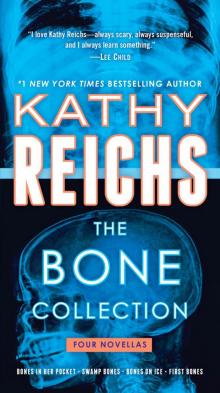 The Bone Collection: Four Novellas
The Bone Collection: Four Novellas Fatal Voyage
Fatal Voyage 206 Bones
206 Bones Bones to Ashes
Bones to Ashes Terminal
Terminal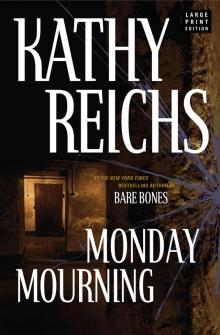 Monday Mourning
Monday Mourning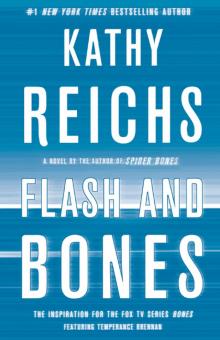 Flash and Bones
Flash and Bones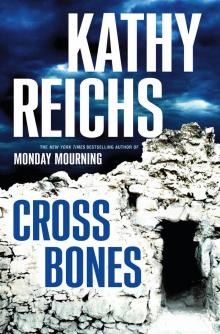 Cross Bones
Cross Bones Devil Bones
Devil Bones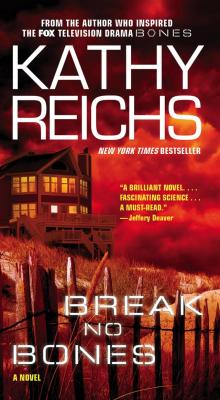 Break No Bones
Break No Bones Swamp Bones
Swamp Bones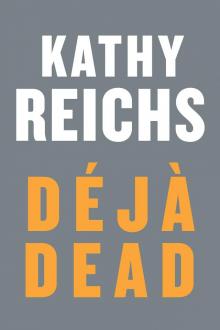 Déjà Dead
Déjà Dead Shock
Shock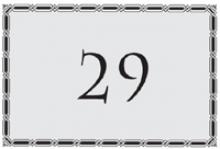 Spider Bones
Spider Bones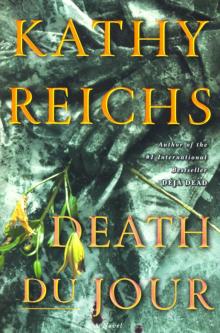 Death Du Jour
Death Du Jour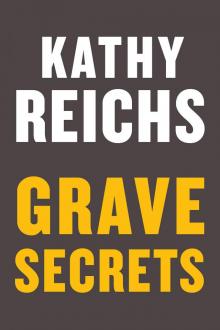 Grave Secrets
Grave Secrets Trace Evidence: A Virals Short Story Collection
Trace Evidence: A Virals Short Story Collection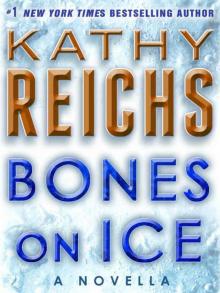 Bones on Ice
Bones on Ice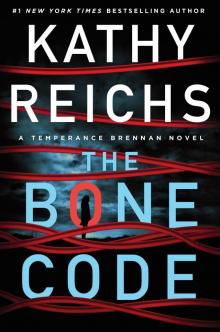 The Bone Code
The Bone Code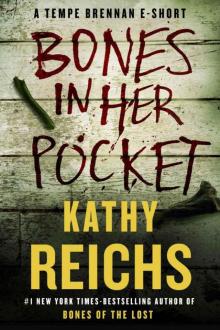 Bones in Her Pocket
Bones in Her Pocket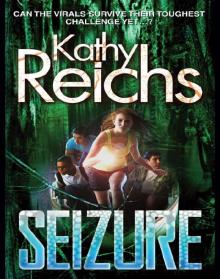 Seizure:
Seizure: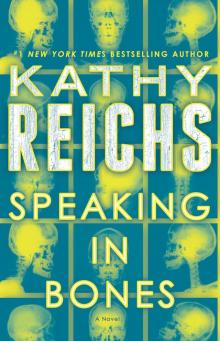 Speaking in Bones
Speaking in Bones Deadly Decisions
Deadly Decisions Spike
Spike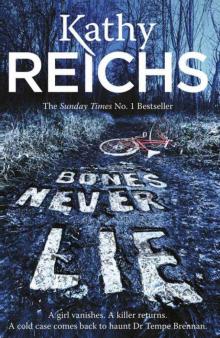 Bones Never Lie
Bones Never Lie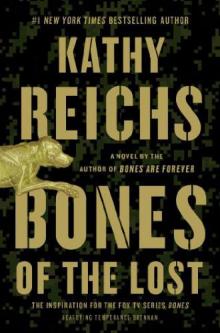 Bones of the Lost
Bones of the Lost Virals 03.5 - Swipe
Virals 03.5 - Swipe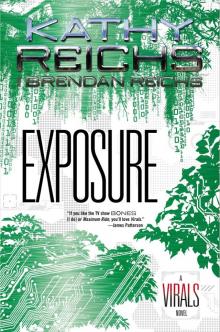 Exposure
Exposure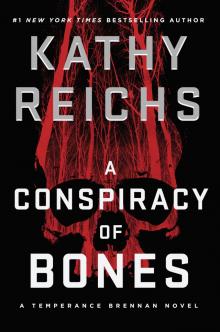 A Conspiracy of Bones
A Conspiracy of Bones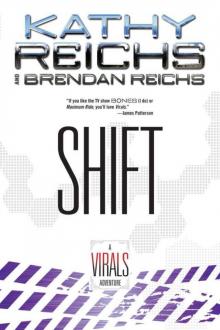 Shift (tory brennan)
Shift (tory brennan)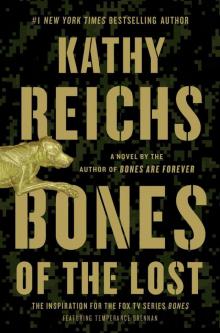 Bones of the Lost: A Temperance Brennan Novel tb-16
Bones of the Lost: A Temperance Brennan Novel tb-16 Virals tb-1
Virals tb-1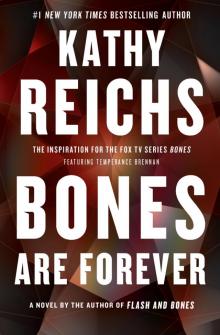 Bones Are Forever tb-15
Bones Are Forever tb-15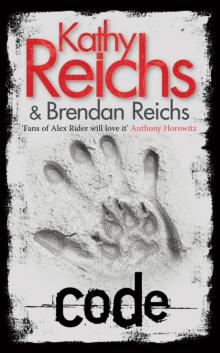 Code tb-3
Code tb-3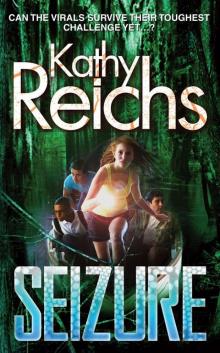 Seizure tb-2
Seizure tb-2 Deadly Descisions
Deadly Descisions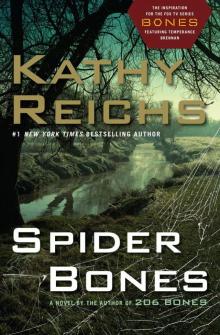 Spider Bones: A Novel
Spider Bones: A Novel